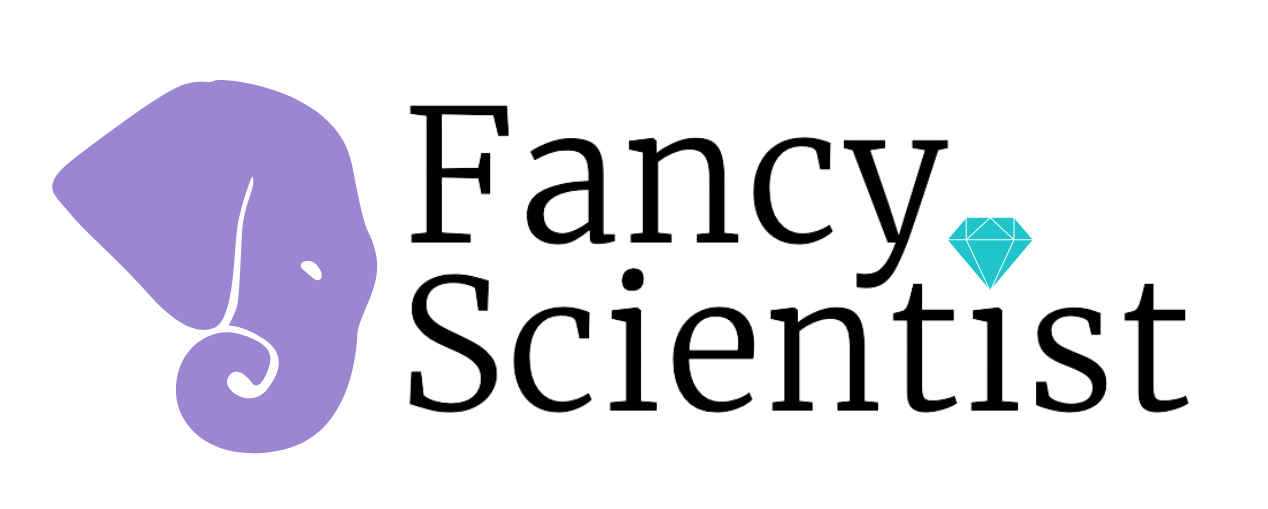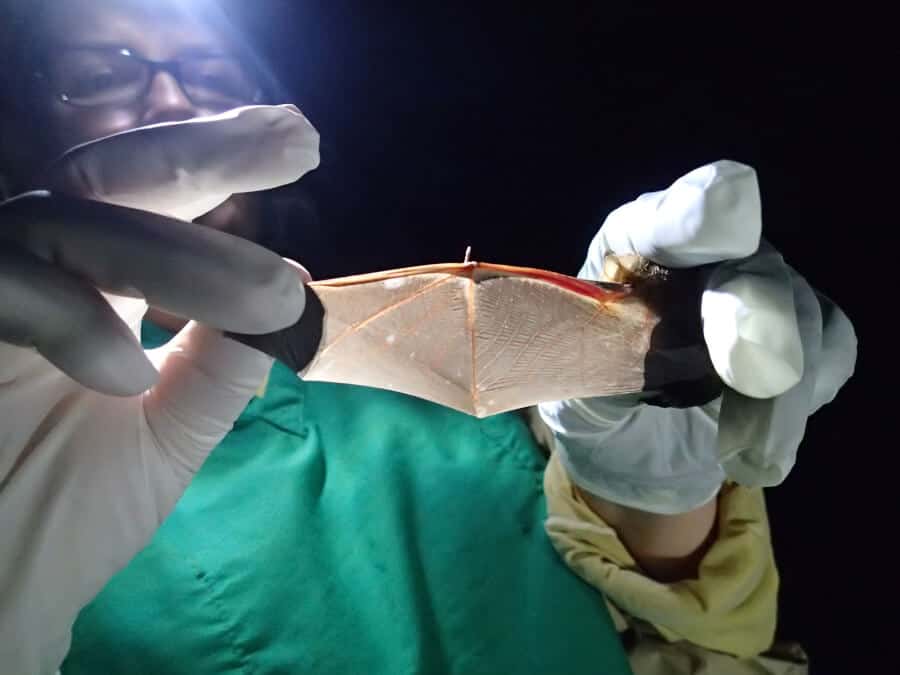It’s Cinco de Mayo and if you love margaritas or tequila, which of course I do, thank a bat. You’ll actually have to thank three species: the Mexican long-nosed bat, the lesser long-nosed bat, and the Mexican long-tongued bat. What what do bats and tequila have in common? And why are we thanking them? And what’s up with the long tongues and noses?
Bats are the OG pollinators of the plants that tequila comes from, blue agave. These three species evolved with the agave plant and pollinate it, allowing agave to reproduce. When you think of pollinators, you probably think of bees and maybe hummingbirds, but many diverse animals are pollinators including vertebrates like bats, monkeys, and birds. The flowers of the agave plant open at night when bats are active, but most other pollinators are not. This relationship is the result of thousands of years of evolution.
Despite this beautiful mutualism between bats and tequila’s plant source, there is a problem with bats and most of the tequila we buy today: much of it happens without bats. When agave plants are pollinated by bats, the pollen from one plant is transferred to another which allows for genetic diversity. But today, the practice of harvesting agave plants for tequila involves cutting stalks before they flower, and reproduction through propagation of the same plant. Therefore, there is no genetic diversity because you are just using a single plant.
While this is easier and more profitable for tequila companies, it does come with risks for the industry. When genetic diversity is limited in any population, and a new threat, for example disease comes along, all individuals will react in a similar way and you can lose everything.
Also, let’s not forget about the bats! They now have more limited food sources. In fact, two of the bats that pollinate blue agave are endangered in the US and the other one is a species of concern.
To solve this problem, enter Batman. I mean the Bat Man, Dr. Rodrigo Medellín. This man is seriously amazing. He’s a scientist who works on bat conservation in Mexico. I was first introduced to Medellín through the following documentary, which is well worth your time, The Bat Man of Mexico.
One of his solutions is the Tequila Interchange Project, a non-profit that advocates for the “preservation of sustainable, traditional and quality practices in the industries of agave distilled spirits.” Within this organization, is the Bat Friendly Tequila and Mezcal Project. They encourage producers to allow 5% of their agave crop to flower and in return, they can have their products labeled as bat-friendly. This not only helps bats, but also helps the industry as a whole because there will be increased genetic diversity from pollination. (I cannot find a list of bat-friendly tequila, but am asking around and will update it as soon as I find one, but you can help the organization by donating here).
The Best Companies for Bats
At the International Congress for Conservation Biology, I was lucky to meet the bat man himself, Dr. Rodrigo Medellín! I had to stop and ask him what were the best tequila companies for bats. He said:
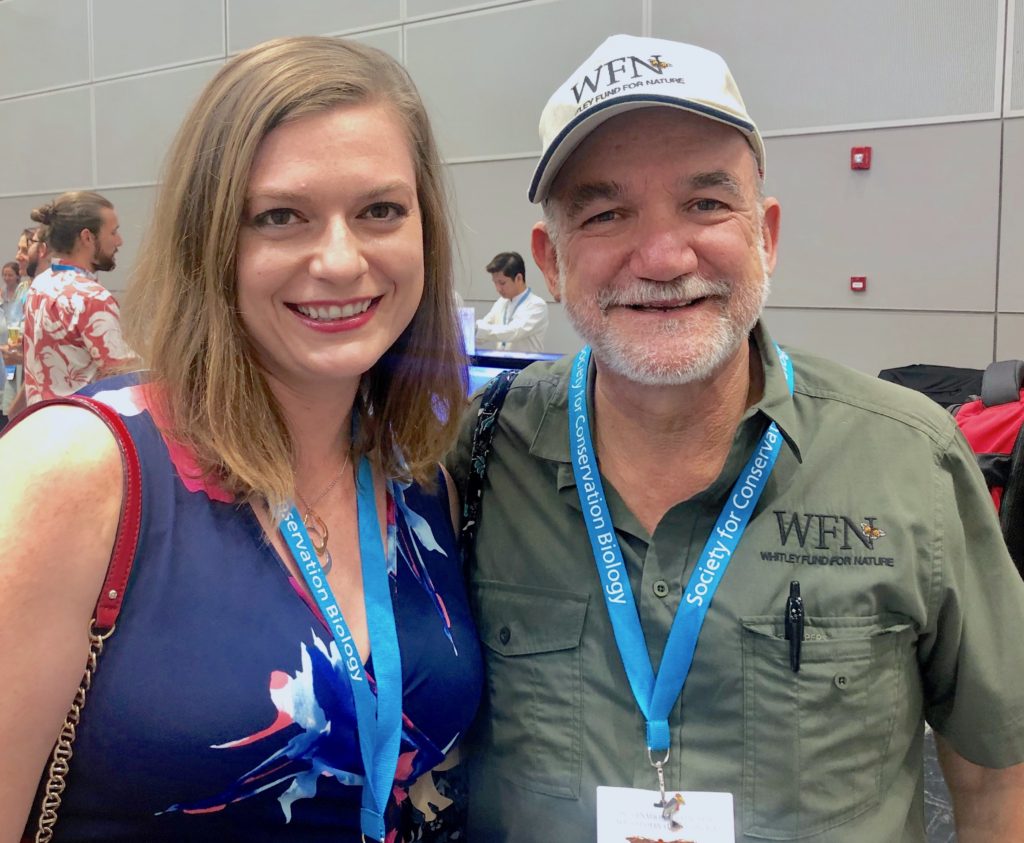
- Tequila Ocho
- Tapatillo
- El Tesoro de Don Felipe
- Siembra Valles
- Cascachuin (Unfortunately, you cannot get this brand in the US)
However, he said the best thing to drink was mezcal, which has a smokey flavor compared to tequila (I love it!). He said that mezcal was not from the genetically-identical monocultures of agave that tequila is. For mezcal, the best brands are:
Now that we know we have to thank bats for our margaritas, let’s meet the bats involved! And what’s up with all of the long noses and tongues? Let’s find out what’s going on.
Bat Pollinators of Blue Agave
The bats that pollinate blue agave are all nectar bats. They have evolved to have long tongues and noses so they can nicely hover around flowers and reach deep inside to get at the yummy nectar.
Mexican long-nosed bat (AKA Greater long-nosed bat)
The Mexican long-nosed bat is endangered on the IUCN Red List. It extends from the Southern US into Mexico and is migratory. The largest threats to this species include disturbance of their roost sites and the loss of food sources because of habitat destruction. This species roosts in caves and mines, and sometimes buildings and trees in large groups of up to 10,000 individuals. They are highly sensitive to disturbance, and will leave when a human enters. There have been some gigantic population declines in this species. In 1938, in an an abandoned mine in Mexico, approximately 10,000 were observed, but in 1983, not a single bat was found. In addition to nectar and pollen, this species also eats grass (did not know this!), fruits, and insects.
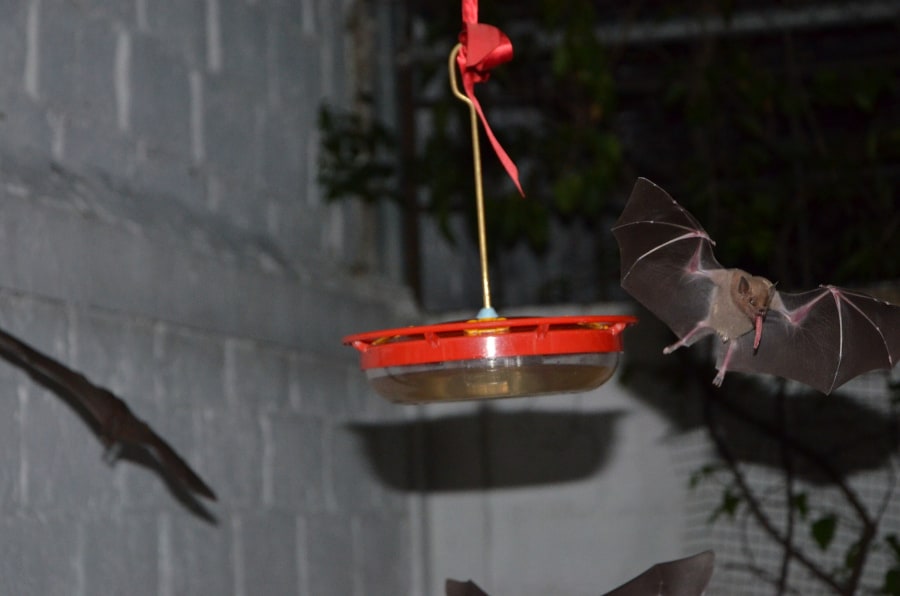
Lesser Long-nosed Bat
This lesser long-tongued bat is listed as near threatened on the IUCN Red List and is in decline because of disturbance (including vandalism) at roost sites and the loss of resources (food!) from habitat loss. This species inhabits thorn scrub and deciduous forest from the southwestern US into Central America and roosts in caves and mines. They can have gigantic colonies – up to tens of thousands and even hundreds of thousands of individuals. In addition to nectar, they also sometimes eat fruit and insects. Their tongue is almost as long as their entire body! (In case you’re wondering, the longest animal tongue in the world belongs to the tube-lipped nectar bat, which is approximately 1.5 times as long as its body.)
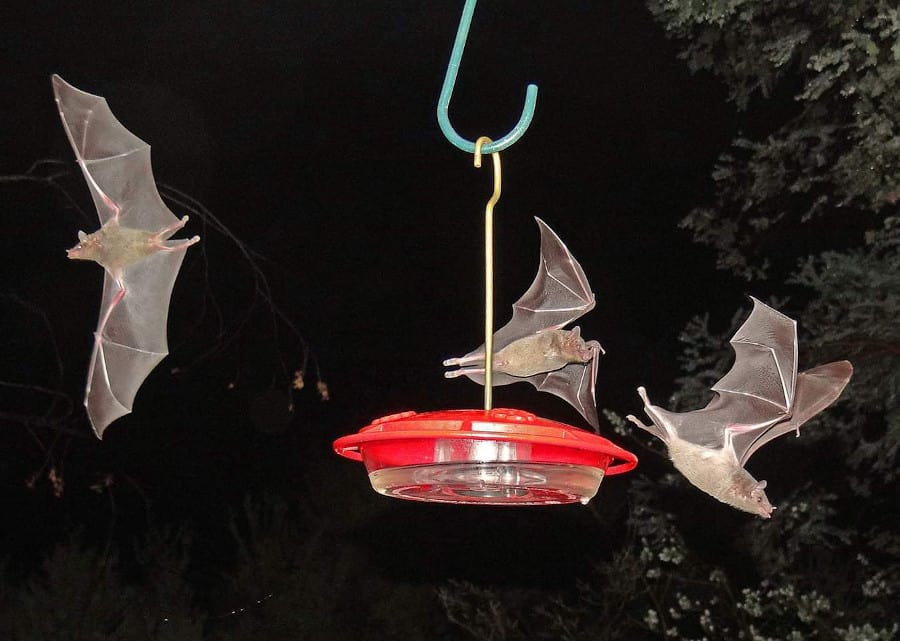
Mexican long-tongued bat
This Mexican long-tongued bat is listed as near threatened on the IUCN Red List. This migratory bat lives in Mexico and the very southwestern US (but, since 1906, fewer than 400 have been observed in the US!). Because this species is migratory, it can transfer pollen long distances. The habitats it depends on (arid thorn scrub, tropical deciduous forest) are fragmented and decreasing. The population trend of this species is not well known. Their roosts can be found in caves and mines and they feed on pollen and cactus fruits in addition to nectar. They can also be seen at hummingbird feeders as in the photo above. Their long tongue is roughly one-third of its body size.
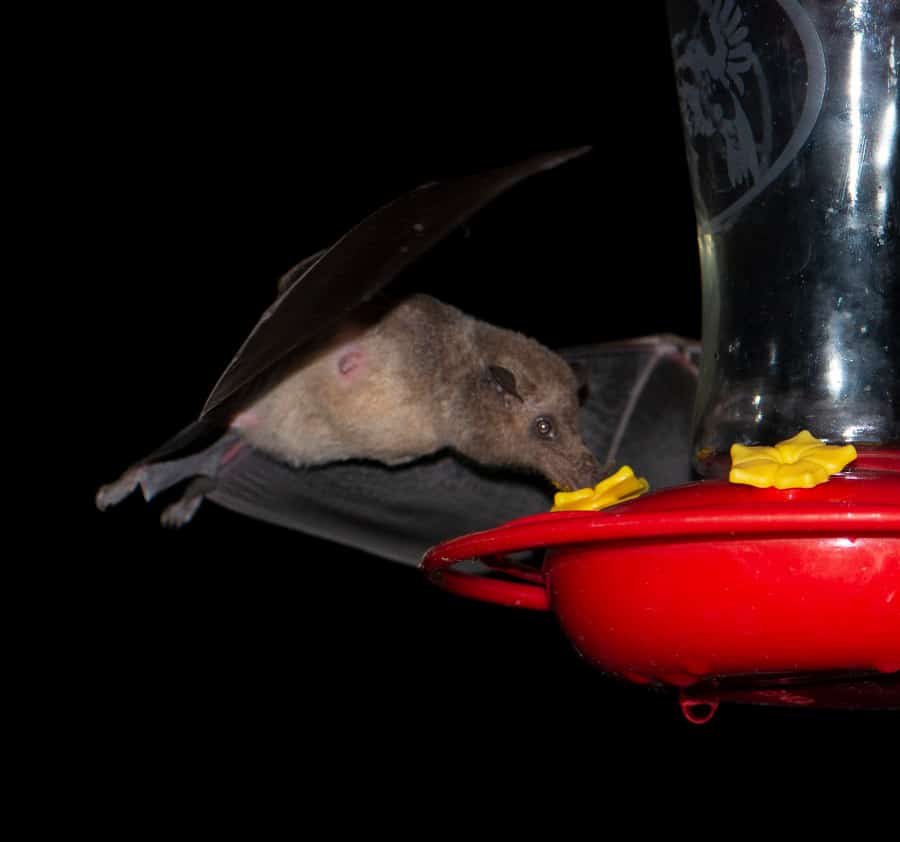
The next time you sip a margarita or take a shot of tequila, thank a bat! Without them, we wouldn’t have the blue agave as it exists today.
Resources for this blog post: IUCN Red List, Animal Diversity Web, NPR, USDA
Resources for this blog post:
IUCN Red List
Animal Diversity Web
NPR
USDA
Want to learn more about bats? Visit
#13. Bats are the Best! Bat Fun with Bat Biologist Lisa Gatens

Love this post? Share it with friends!
